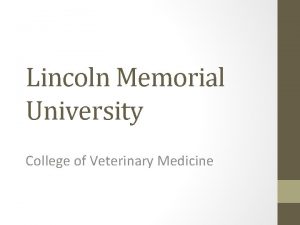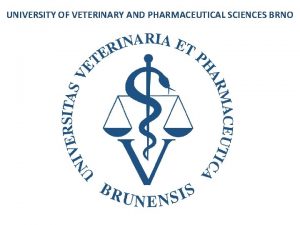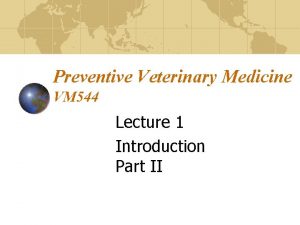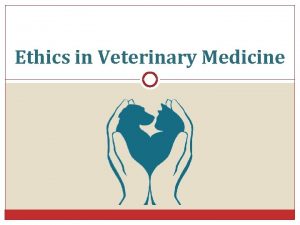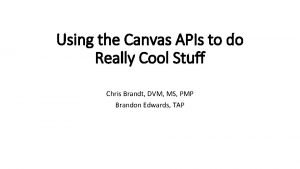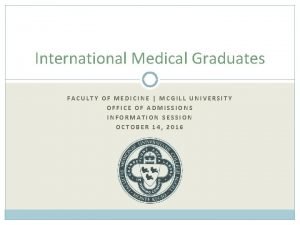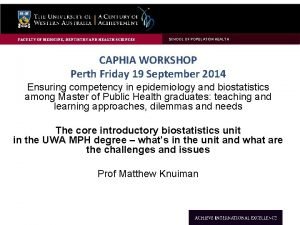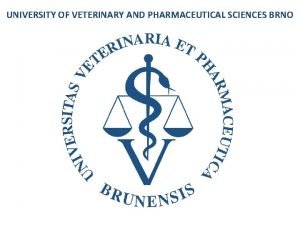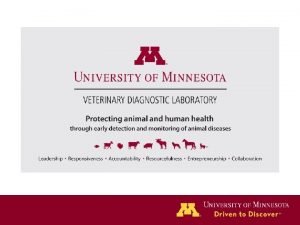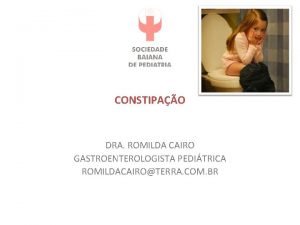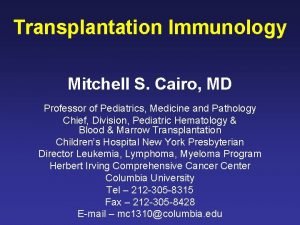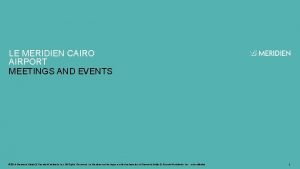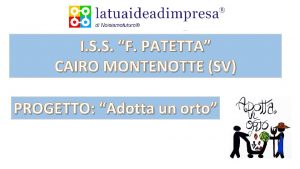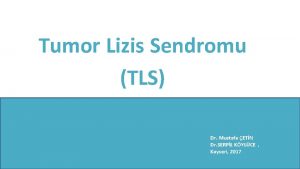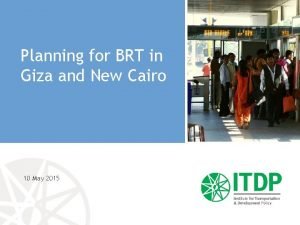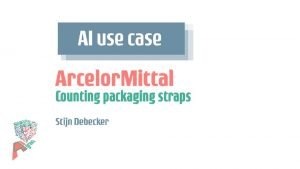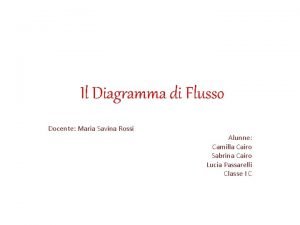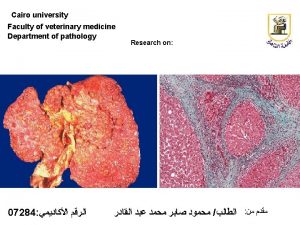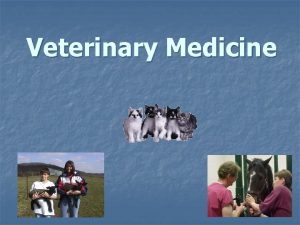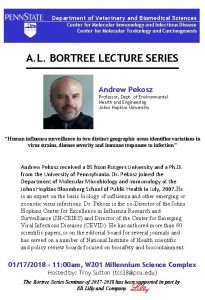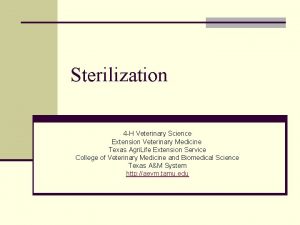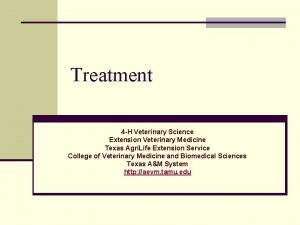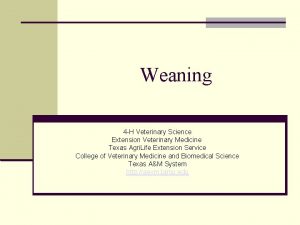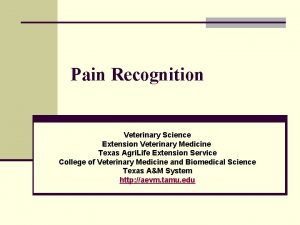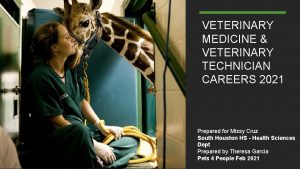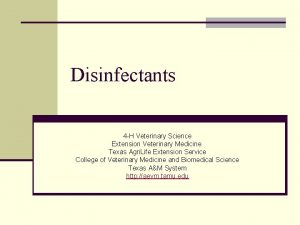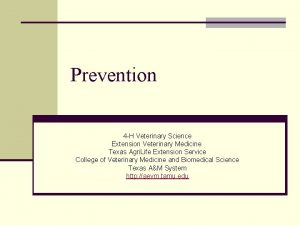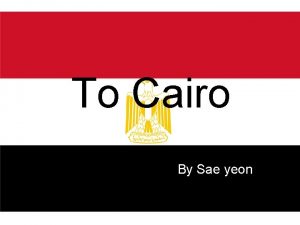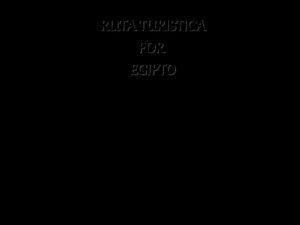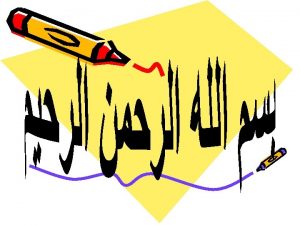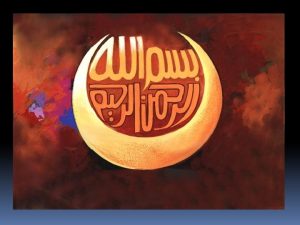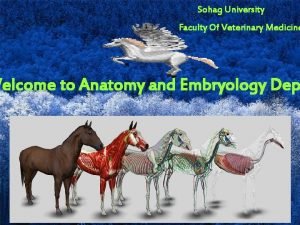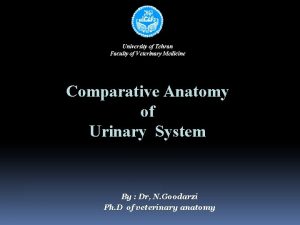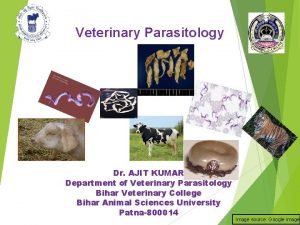Cairo University Faculty of Veterinary Medicine Department of






































- Slides: 38

Cairo University Faculty of Veterinary Medicine Department of Pathology CHEMICAL MEDIATORS OF INFLAMMATION ﻛﻮﻛﺐ / ﺩ. ﺗﺤﺖ ﺍﺷﺮﺍﻑ ﺃ ﻣﺤﻤﺪ ﻣﺤﻤﻮﺩ ﻣﺤﻤﺪ ﻣﺸﺎﻟﻰ ﻋﺒﺪ ﺍﻟﺤﻤﻴﺪ / ﻃﺎﻟﺐ 07274/ ﺭﻗﻢ

Introduction: Inflammation • provoked response to tissue injury • • chemical agents cold, heat trauma invasion of microbes • serves to destroy, dilute or wall off the injurious agent • induces repair • protective response • can be potentially harmful

CARDINAL SIGNS OF ACUTE INFLAMMATION Heat Redness Swelling Pain Loss of function

Inflammation - Mechanism 1. Vaso dilatation 2. Exudation - Edema 3. Emigration of cells 4. Chemotaxis 5. Phagocytosis


CHEMICAL MEDIATORS OF INFLAMMATION Definition: Any messenger that acts on blood vessels, inflammatory cells, or other cells to contribute to an inflammatory response. (Pretty much anything. . . ) • Exogenous – Endotoxins • Endogenous – – Plasma Leukocytes Endothelial cells Fibroblasts


Chemical Mediators of Inflammation: • • • Locally produced Histamine Seratonin/5 HT Interleukins. Prostaglandins Leukotrienes • • Plasma derived Kinins Complements Coagulation system • Plasminolysis system • Others: H 2 O 2, NO

CHEMICAL MEDIATORS OF INFLAMMATION Facts • Mechanism of action – Receptor-ligand interactions (1 o) – Direct enzymatic activity – Mediate oxidative damage • Extensive network of interacting chemicals • High degree of redundancy • Guarantees amplification and maintenance of inflammatory response • Short t ½ and are harmful

CHEMICAL MEDIATORS • Vasodilation – Prostaglandins, Nitric Oxide • Increased Vascular Permeability – Vasoactive amines (histamine, serotonin), C 3 a and C 5 a, Bradykinin, Leukotrienes, PAF, • Chemotaxic Leukocyte Activation – C 5 a, LTB 4, Chemokines

CHEMICAL MEDIATORS OF INFLAMMATION • Fever – IL-1, IL-6, TNF, Prostaglandins • Pain – Prostaglandins, Bradykinin • Tissue Damage – Neutrophil and Macrophage products – Lysosomal enzymes – Oxygen metabolites – NO Bradykinin

VASOACTIVE AMINES • Increase Vascular Permeability and Vascular Permeability • Histamine and Serotonin – Mediators in the immediate active phase of increased permeability – Promotes contraction of smooth muscle – Stimulates to cells to produce eotaxins – Serotonin found in rodent mast cells

Vasoactive Amines Continued • Releasing Stimulators – Direct physical or chemical injury – Binding of Ig. E- Agcomplexes – Fragments of C 3 a and C 5 a – Histamine releasing factors (pmn’s and θ) – Cytokines (IL-1, IL-8) – Neuropeptides

PLASMA PROTEASES 3 interrelated systems are active within this category 1. Kinin system – Highly vasoactive 2. Complement system • Vasoactive • Chemotactic 3. Clotting system • Vasoactive • Cleaves C 3

Interaction of Kinin-, Coagulation- and Complement system during acute inflammation Factor XII (Hageman) Collagen, basement membrane, platelets and microbial surfaces XIIa Kinin cascade Kallikrein Prekallikrein Prothrombin HMWK Plasminogen Bradykinin Clotting cascade sic n i r y Int hwa t pa Thrombin PAR* Acute Inflammation Fibrinolysis Plasmin Fibrinogen Complement C 3 a * Protease activated receptors

COMPLEMENT SYSTEM • Plasma proteins - act against microbial agents • Products of activated complement – – Vascular permeability Chemotaxis Opsonization Lysis

COMPLEMENT SYSTEM Few reminders • • Classical pathway Alternate pathway Common pathway Important inflammatory mediators – C 3 a and C 5 a (anaphylatoxins) – Cause release of histamine from mast cells – Lysosomal enzyme release in inflammatory cells – C 5 a – Activates lipoxygenase pathway – Chemotactic many inflammatory cells – Increases adhesion of leukocytes

COMPLEMENT SYSTEM And Inflammation • C 5 b-9 membrane attack complex – Lyses cells – Stimulates arachidonic acid metabolism – Produces reactive oxygen metabolites

Complement Cascade

KININ SYSTEM BRADYKININ • Activated by Hageman factor (XIIa) • Bradykinin – Release of vasoactive nonapeptide bradykinin – Generated from the plasma • • • Potent vasodilator Increased vascular permeability Contraction of smooth muscle Produce pain Stimulates release of histamine Activates the arachidonic acid cascade


COAGULATION SYSTEM Clotting system • Plasma proteins – Can be activated by Hageman factor • Thrombin converts fibrinogen to fibrin – Fibrinopeptides are formed – ↑vascular permeability – Chemotactic for leucocytes • Plasmin is important in lysing fibrin clots, – Activates Hageman factor (XII) ⇨ bradykinin – Cleaves C 3 ⇨ C 3 a – "fibrin-split products" formed from fibrin breakdown – ↑ vascular permeability

COAGULATION CASCADE TF: tissue factor; HK: high-molecular-weight kininogen; PK: prekallikrein; PL: phospholipid; PT: prothrombin; TH: thrombin.

Clotting System

HAGEMAN FACTOR Dependent Factors • Factor XII of intrinsic coagulation cascade • Activated by – Negatively charged surfaces – Platelets – Proteases from inflammatory cells • Causes – – – Coagulation Activation of fibrinolytic system Produces bradykinin Activates complement Provides an amplification system

IMPORTANT NOTE • Activated Hageman factor (factor XIIA) initiates the clotting, fibrinolytic and kinin systems. The products of this initiation (kallikrein, factor XIIA, and plasmin, but particularly, kallikrein) can, by feedback, activate Hageman factor, resulting in significant amplification of the effects of the initial stimulus.


CYTOKINES • Transmitters for cell-to-cell chatting – Modulate cell function • Primarily from activated macrophages and lymphocytes • IL-1, IL-8, TNF

IL-I and TNF “Master Cytokines” • Origin – Monocytes – Macrophages • • Similar in action Endothelium Acute phase proteins Fibroblasts

Other Cytokines Chemokines? ? ? • IL-5 – Eosinophils • IL-6 – B and T cells • IL-8 – Neutrophils – Lesser degree monocytes and eosinophils


GROWTH FACTORS • Platelet derived growth factor • Transforming growth factor β – Chemokines - Leukocytes and Mesenchymal Cells • Important in regeneration and repair

NITRIC OXIDE (NO) Just say NO! • Nitric oxide is synthesized from L-arginine • 2 enzymes and many factors produce NO • 3 effects – – – ♥♥ physical mediator of vascular tone Host defense (forms perroxynitrite) Signaling molecule – especially brain Reduces platelet aggregation and adhesion Inhibits several features of mast cell induced inflammation • Uncontrolled NO production – Can lead to massive peripheral -Vasodilation -Shock



LYSOSOMAL CONSTITUENTS • Neutrophils, Monocyte/Macrophages – Enzymes and proteins within granules • Cationic proteins – ↑ vascular permeability – Chemotactic • Neutral proteases – Degrade ECM

OXYGEN-DERIVED FREE RADICALS • • Cause endothelial damage Protein destruction by inhibiting antiproteases Injury to variety of cells Don’t forget the antioxidants – Ceruloplasmin – Transferrin – Superoxide dismutase – Catalase – Glutathione peroxidase

 Faculty of veterinary medicine cairo university logo
Faculty of veterinary medicine cairo university logo Faculty of veterinary medicine cairo university
Faculty of veterinary medicine cairo university Cairo university faculty of veterinary medicine
Cairo university faculty of veterinary medicine Dorsocranially
Dorsocranially Lincoln memorial university college of veterinary medicine
Lincoln memorial university college of veterinary medicine University of veterinary and pharmaceutical sciences brno
University of veterinary and pharmaceutical sciences brno Hubert kairuki memorial university faculty of medicine
Hubert kairuki memorial university faculty of medicine Semmelweis
Semmelweis King abdulaziz university faculty of medicine
King abdulaziz university faculty of medicine Agnes csaki semmelweis
Agnes csaki semmelweis Hacettepe university faculty of medicine
Hacettepe university faculty of medicine Semmelweis university faculty of medicine
Semmelweis university faculty of medicine American university in cairo history
American university in cairo history Vm 544
Vm 544 Ethics in veterinary medicine
Ethics in veterinary medicine Canvas ucdavis
Canvas ucdavis Faculty of medicine nursing and health sciences
Faculty of medicine nursing and health sciences Department of medicine mcgill
Department of medicine mcgill Pubh4401
Pubh4401 Coumadin clinic emory
Coumadin clinic emory Keralastec
Keralastec Brno veterinary university
Brno veterinary university U of mn diagnostic lab
U of mn diagnostic lab Dvt agricultural bihar
Dvt agricultural bihar New cairo british international school
New cairo british international school Cronos tiempos
Cronos tiempos Dra romilda cairo
Dra romilda cairo Mitchell cairo md
Mitchell cairo md Le meridien cairo airport wedding packages
Le meridien cairo airport wedding packages Patetta cairo montenotte
Patetta cairo montenotte Relative location of ancient egypt
Relative location of ancient egypt Bishop sınıflaması
Bishop sınıflaması Brt cairo
Brt cairo Victor cairo arcelormittal
Victor cairo arcelormittal Cairo conference definition ap human geography
Cairo conference definition ap human geography Sabrina cairo
Sabrina cairo Herszon kherson maritime college of merchant marine fleet
Herszon kherson maritime college of merchant marine fleet Bridgeport engineering department
Bridgeport engineering department Computer science tutor bridgeport
Computer science tutor bridgeport




